Montessori Practical Life Lesson: Flower Arranging
Today, we have another great Montessori practical life lesson from Beth Holley.
With Spring in the air and our current focus on botany for kids, we thought it would be fun to present the flower arranging practical life work. Enjoy!
It’s spring and that means flowers! Here in the purple–blue mountains of western North Carolina, our woods, fields, and gardens are simply bursting with color. No better time than now to introduce flower arranging the Montessori way.
My children never tired of flower arranging, and I never tired of observing their appreciation of beauty and care for their own environment. Children need to be surrounded by beauty in order to appreciate beauty. As guides, we can point out the beauty in our everyday surroundings.
Dr. Montessori made an interesting assertion: by refining the child’s sensory and aesthetic sensibilities, we prepare her moral sensibilities! She believed children who develop an appreciation for the aesthetic harmony in nature, discerning order and beauty, are more easily morally educated. This claim is ripe for research.
Flower arranging is a great nomenclature activity, too, with wonderful names like Aster, Zinnia, and Gerbera Daisy. Budding reader? Perhaps provide some reading labels to distribute among the flower vases.
As you will see below, flower arranging has many steps. In our wood polishing exercise, we talked about how the advanced practical life activities require following a prescribed sequence. Such orderly tasks require a great deal of attention and mental concentration.
Dr. Montessori firmly believed that the child’s cognitive processes are assisted by combining movement with an organized task. This task just happens to fill the room with flowers.
How To Present Flower Arranging
Purpose:
- Direct: to develop a sense of beauty; to develop the mental task of sequencing; to exercise judgement of size and capacity in matching flowers to vases and in pouring water; manual dexterity in using scissors
- Indirect: preparation for botany studies (e.g., parts of the flower, flower dissection); independence; concentration
- child–sized tray or basket containing
- sponge
- scissors
- funnel
- small cloth
- place mat
- child–sized pitcher
- small basin
- optional apron
- supply of flowers
- collection of small vases (kept on the shelf)
- small bucket
(You can also purchase the complete Flower Arranging Set from Montessori services.)
Age: 3+
Prerequisite: ability to cut with scissors; ability to pour water from a pitcher into a vase with or without a funnel (depending on the width of the vase opening)
Practical Life Lesson Presentation:
1. Bring materials to the table. Put on aprons.
2. Spread out the place mat and arrange materials left to right at the top of the mat: sponge, scissors, funnel, and cloth. Place small basin on the place mat.
3. Fill the pitcher about 3/4 full with cool water at the sink, and return to the table.
4. Fill the basin with water about 1 inch deep, wiping the lip of the pitcher with the sponge.
5. Choose a vase from a collection and bring it to the table.
6. Fill the vase with the appropriate amount of water, wiping the lip of the pitcher with the sponge.
7. Choose one flower from the supply and measure it against the vase to see if it’s the right length. If not, say, “I need to cut this flower to the right length for this vase.” If leaves need to be removed, say, “I need to remove these leaves so none are under water.”
8. Remove leaves. Submerge the stem end in the basin and clip to length with the scissors.
9. Place in the vase.
10. Invite the child to select a place for it in the room.
11. The child repeats steps 5–10 independently, filling several vases if she wishes.
With a Funnel
On the same or another occasion, repeat steps 5–10 with a slender vase requiring a funnel to pour in the water.
To clean up:
- Pick stem clippings out of the basin and place them in the trash.
- Pour the water from the basin and pitcher into the small bucket. Empty the bucket.
- Dry the basin and bucket with the cloth.
- Put the damp cloth in the hamper, get a new one.
- Arrange and return all materials to storage.
Points of Interest:
- Does the child cut the stem to the vase size?
- Does she cut it under water?
- Does she judge the right amount of water to pour in the various vases?
Note: You can create a simplified version of this exercise for younger children. Provide pre–cut flowers and a wide–mouth vase; let them help fill the vase and then place the flowers inside.
In the Montessori classroom, flower arranging is a daily activity. That means a lot of flowers! I found a few grocery store florists who gave me leftover stock.
To keep your main supply of flowers fresh longer, keep them in the fridge. Change the water every two days, and re–cut the stems on a slant under water (if you cut in the open air, air–clumps in the veins will interfere with water uptake). Remove any leaves below the water line. Hollow–stemmed flowers fade more quickly than solid–stemmed flowers.
Some people swear by a preservative made of 1 oz vinegar, a couple pinches of sugar, and a couple drops of bleach for every 10 oz of water.
Collect vases of various sizes, shapes, and colors, so that your child can choose which ones best suit the flowers on hand.
Sit back and admire!
To learn more about Montessori theory, please visit Beth’s blog A Montessori Lexicon, and you can also find her on Teachers Pay Teachers.
Did you like this Montessori practical life lesson? Check out the next lessons in the series, making orange juice and washing a table.

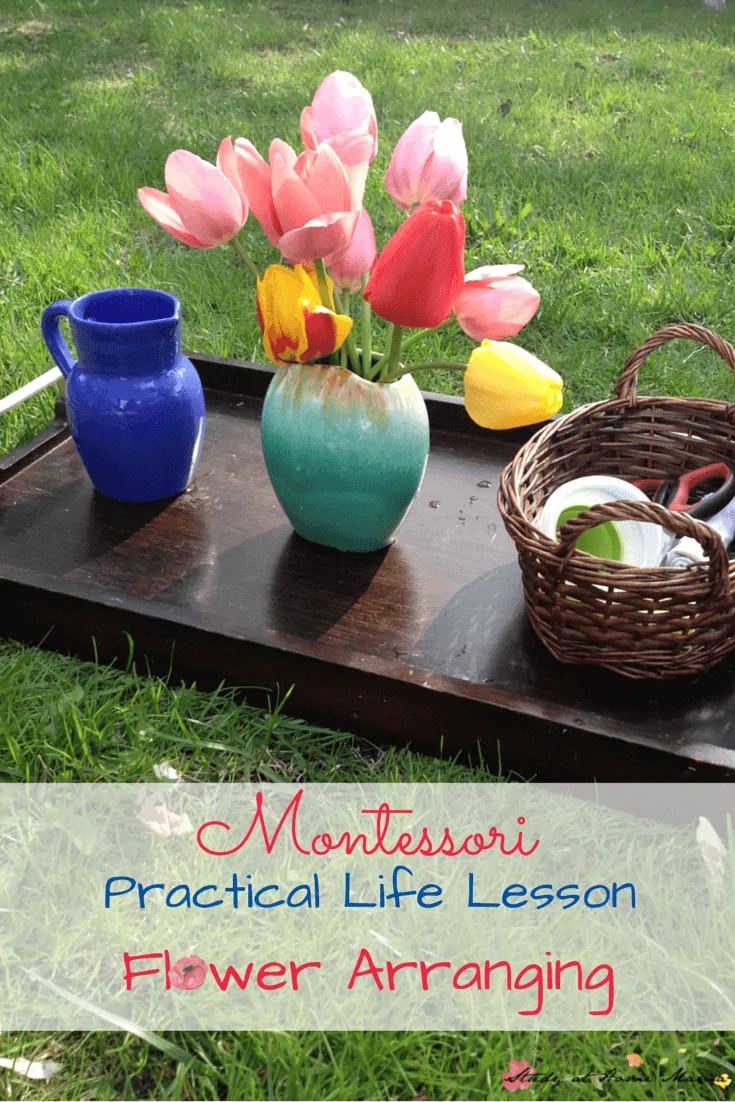
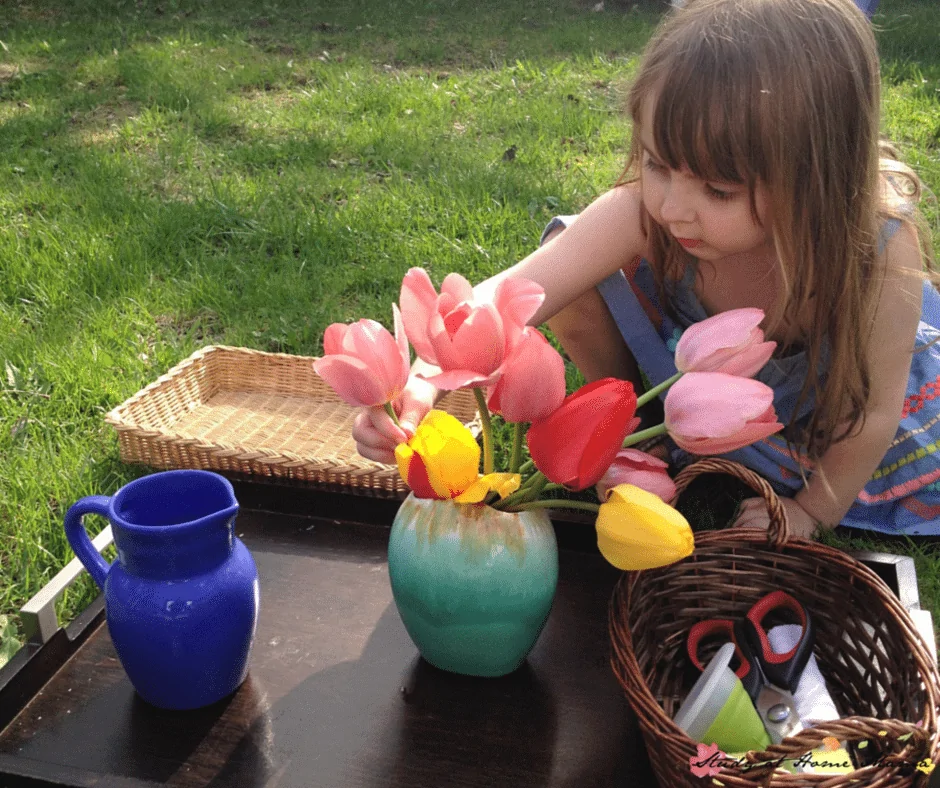
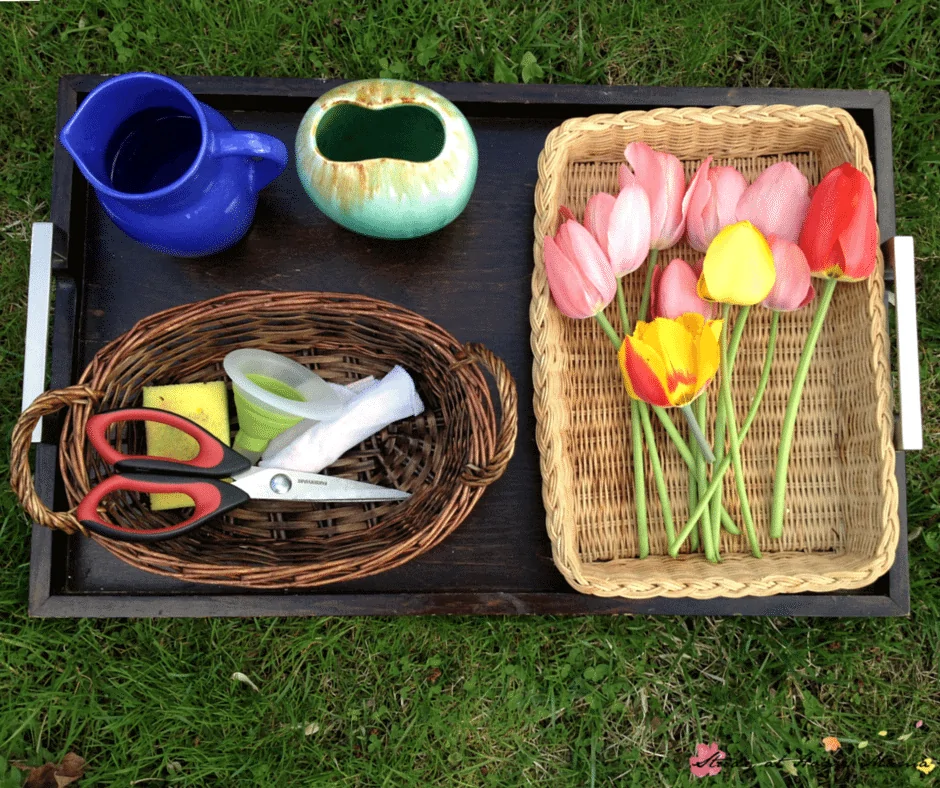
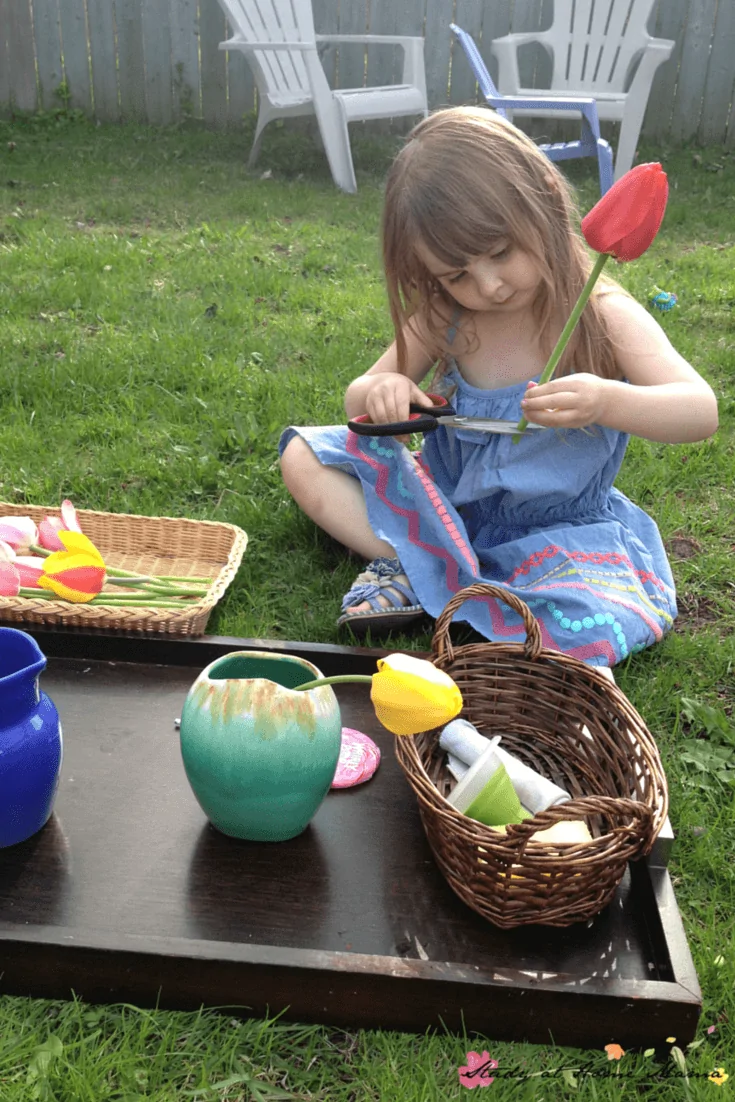
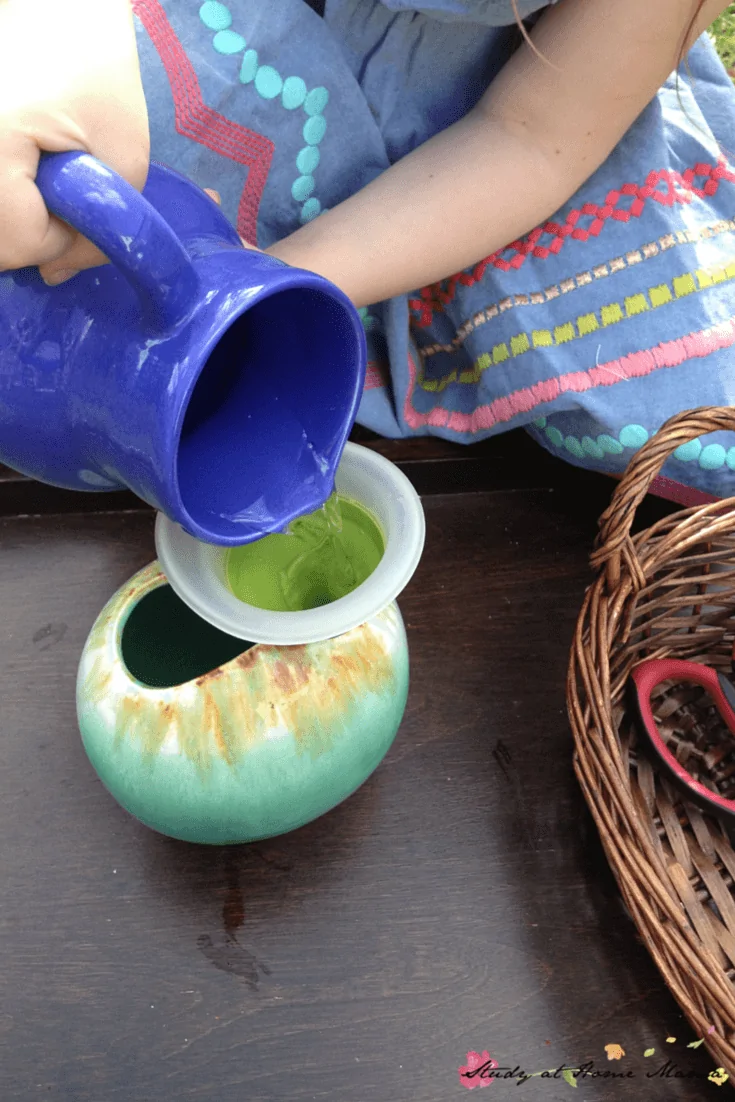
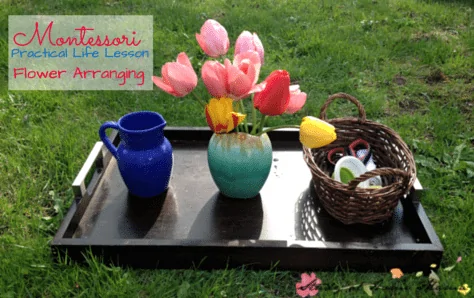
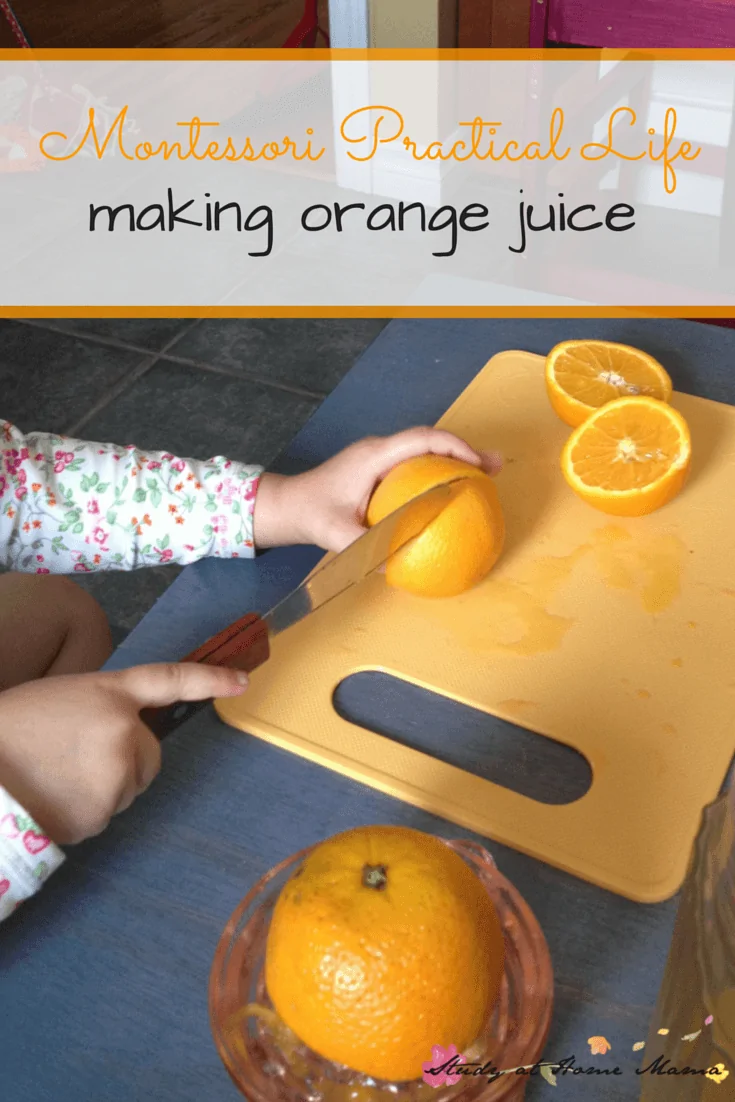
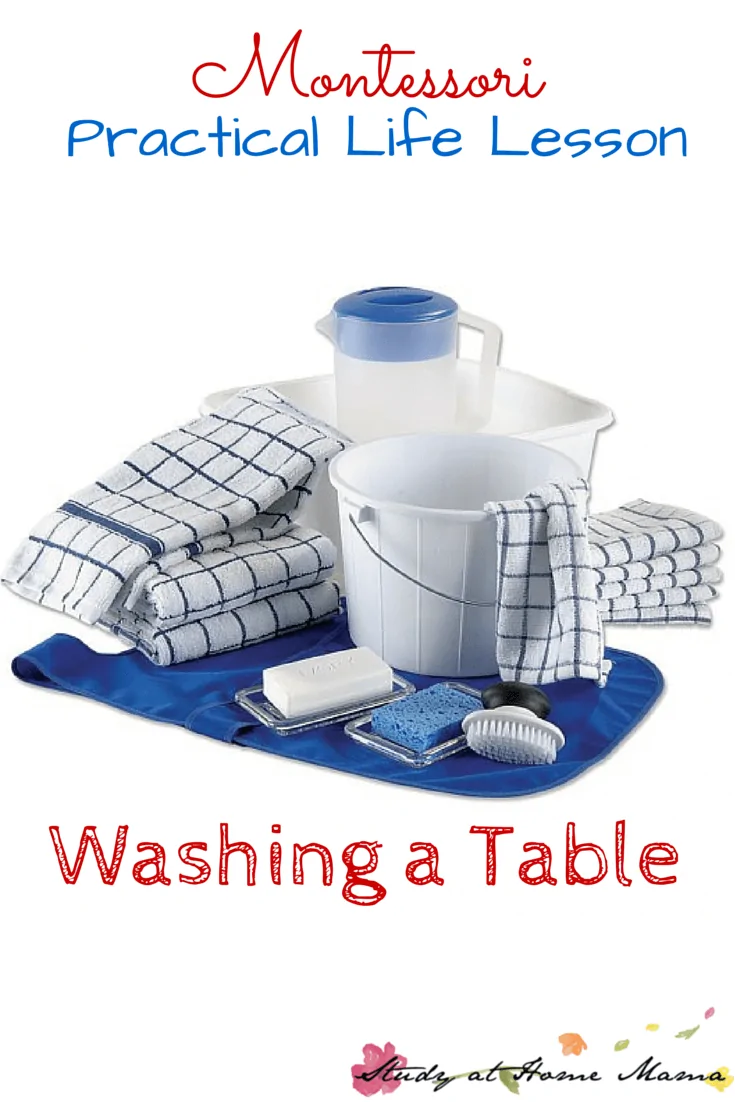
your post will be featured on my blog today for the #pinitparty
Wow, thanks!
Oh thank you!
I love how these activities teach practical skills that carry over to other things in their little lives. Thanks for posting. Hello from Fabulously Frugal Linky.
Thank you, Melissa!
Thank you for stopping by, Melissa!
I love this! My son loves to choose flowers from the garden to put in a vase on his little table 🙂
(Popping over from the Pin-It Party)
Aw, that’s so wonderful! Thanks for stopping by!
Aw, that’s so sweet! Thanks for stopping by!
This looks like so much fun!
Thanks for linking up with this week’s #FabulouslyFrugal x x
Thank you 🙂
Thanks for hosting!
Nice post!
LOVE THIS POST. Where did you find this quote? Is it from Dr Montessori’s book?
by refining the child’s sensory and aesthetic sensibilities, we prepare her moral sensibilities! She believed children who develop an appreciation for the aesthetic harmony in nature, discerning order and beauty, are more easily morally educated. This claim is ripe for research.